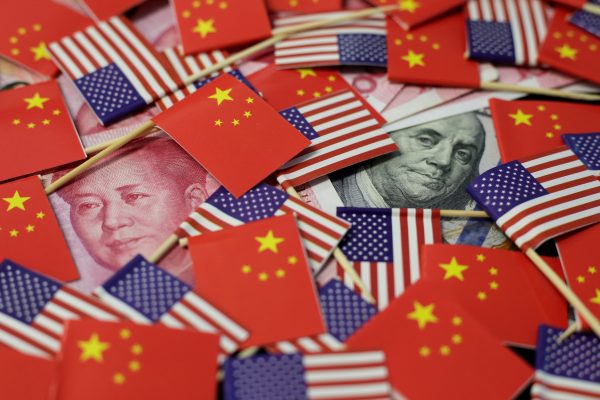This is more than a resetting of the trade relationship between China and the United States. US policymakers have sought to engage and integrate China into the global economy via global trade rules and institutions since the 1980s.
Past US administrations based their China policies on the assumption that China’s economy will move to a more liberal market order via institutional adjustments imposed through global rules. These strategies led to a complex and intertwined relationship between the United States and China. The changes signalled by Trump’s executive order reflect a post-engagement policy supported by the US security community. A significant element of this post-engagement policy is the overt disregard for the WTO rules which have been a US political project since the Cold War.
A key element of this post-engagement policy is the the reconfiguration of security and economics within both trade and strategic policy. The integration of China into the economic order was originally premised on the primacy of a US-based security order in the Asia Pacific. This has been challenged on two fronts. One is the emergence of Chinese political and economic projects such as the Belt and Road Initiative, seen as a challenge to US dominance. The other is the strategic assertiveness of the Chinese military, particularly in the South China Sea.
These Chinese economic–political projects are rooted in distinctive patterns of Chinese capitalist transformation and internationalisation. The United States is now competing by implementing its own political projects on infrastructure, connectivity and trade, with US security agencies combining to promote those particular forms of economic integration that are directly linked to security interests.
The policies of the Trump administration are a response to the domestic political failures of using engagement strategies to manage the various ups and downs of the US–China relationship, such as the Trans-Pacific Partnership and its security counterpart, the ‘Pivot to Asia’. The policies overturn the instruments through which previous strategies of engagement were conceived and executed. The reconfiguration of the relationship between economics and security is at the core of this post-engagement management. This relationship has always been shaped by domestic US politics.
The recent executive order is emblematic of this post-engagement strategy, reshaping the US–China relationship by eschewing the use of international legal rules. The new strategy is in favour of the unilateral use of coercive domestic-based policy instruments such as sanctions, the use of the ‘national security’ doctrine and mobilising US financial and technological regulatory standards.
A striking illustration of this new coercive unilateral trade strategy is Canada’s arrest (under a US extradition request) of Huawei Chief Financial Officer Meng Wanzhou, supposedly over Huawei violating international sanctions regimes. But the arrest also has clear political motivation to pressure Huawei, a form of economic lawfare. It led to the arrest by China of a former Canadian diplomat on patently false charges in retaliation.
There is a striking parallel to today’s measures. In the 1970s, the United States used legislative instruments to force Japan into voluntary restraints on its exports. Current US Trade Representative Robert Lighthizer was then the deputy representative under Reagan, having helped devise the export restraint regime against Japan.
It is as an outcome of this political crisis that the WTO project in the 1990s was used as an effort to institutionalise multilateral mechanisms to enforce trade rules through strategies of legalisation. This created more intrusive trade and regulatory rules, such as those in intellectual property rights. Together with the opening of financial markets and the expanded international role of the Federal Reserve, the institutional architecture of global finance and trade changed fundamentally. The combined development of Chinese and US capitalism created its own patterns of uneven development that laid the ground for the political crisis that led to Trump’s presidency.
The China engagement policy needs to be situated within a US-led international market reform project that has both economic and security dimensions, keeping in mind that the United States has coercive policy instruments in its management of geopolitical and economic relationships.
The perception of a growing threat to the United States through a strategic technology competition is another challenge. Chinese policies that aim to outdo America’s technological capabilities are seen as a fundamental challenge to US dominance. The US government’s targeting of Huawei and strategic oversight of investments by Chinese-based technology companies in the United States, while ostensibly justified through citing ‘direct threats to national security’, also reflect anxiety over a potential technological competition with China. The ‘Made in China 2025’ industrial strategy to upgrade Chinese technological capacities is only adding fuel to the fire.
The turn towards coercive instruments signals a move away from the technocratic management of global trade rules. But rather than a move towards US economic nationalism, it reflects an authoritarian right-wing version of globalisation that has roots in domestic political crisis.
Kanishka Jayasuriya is Professor of Politics and International Studies in the Department of Politics and International Studies at Murdoch University, Perth.

